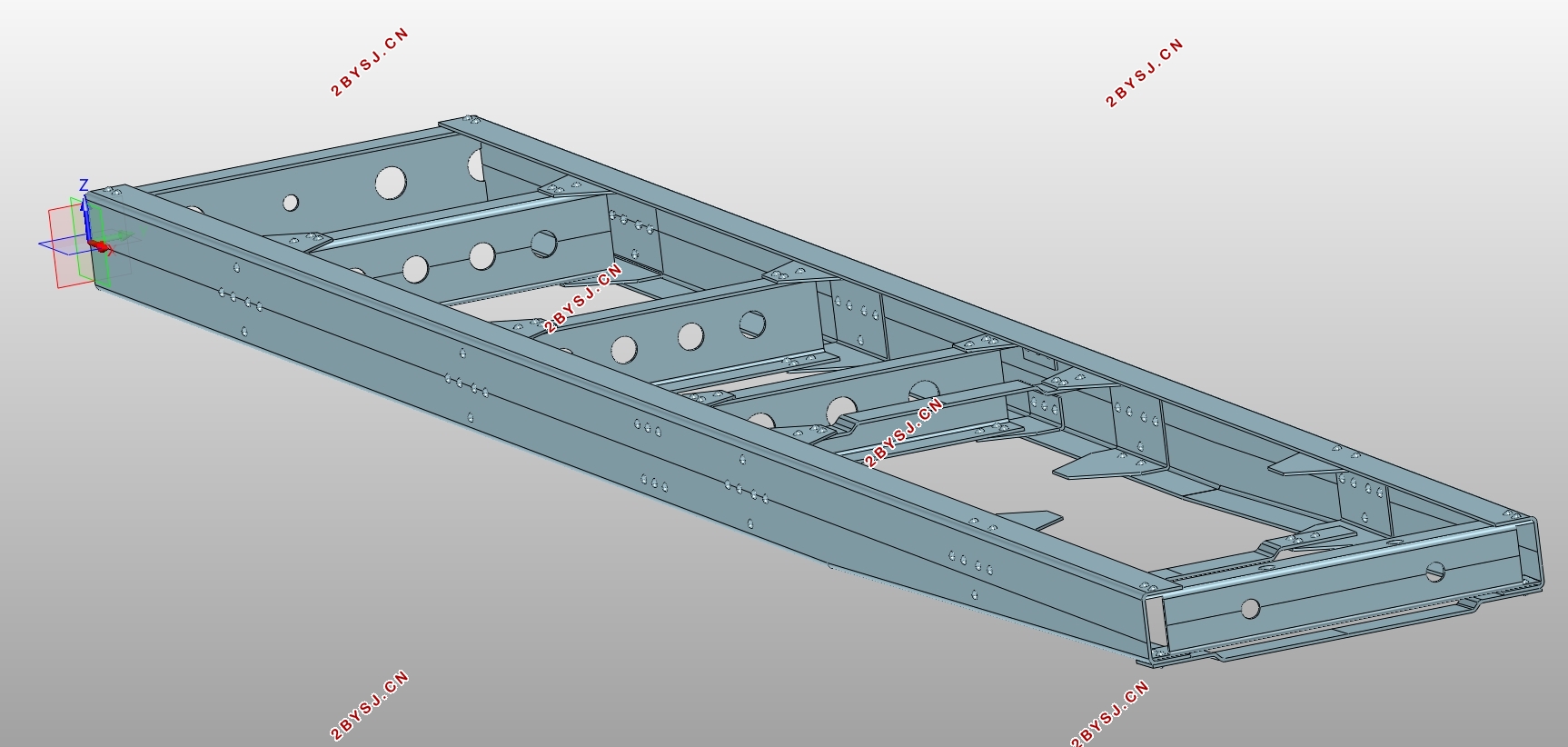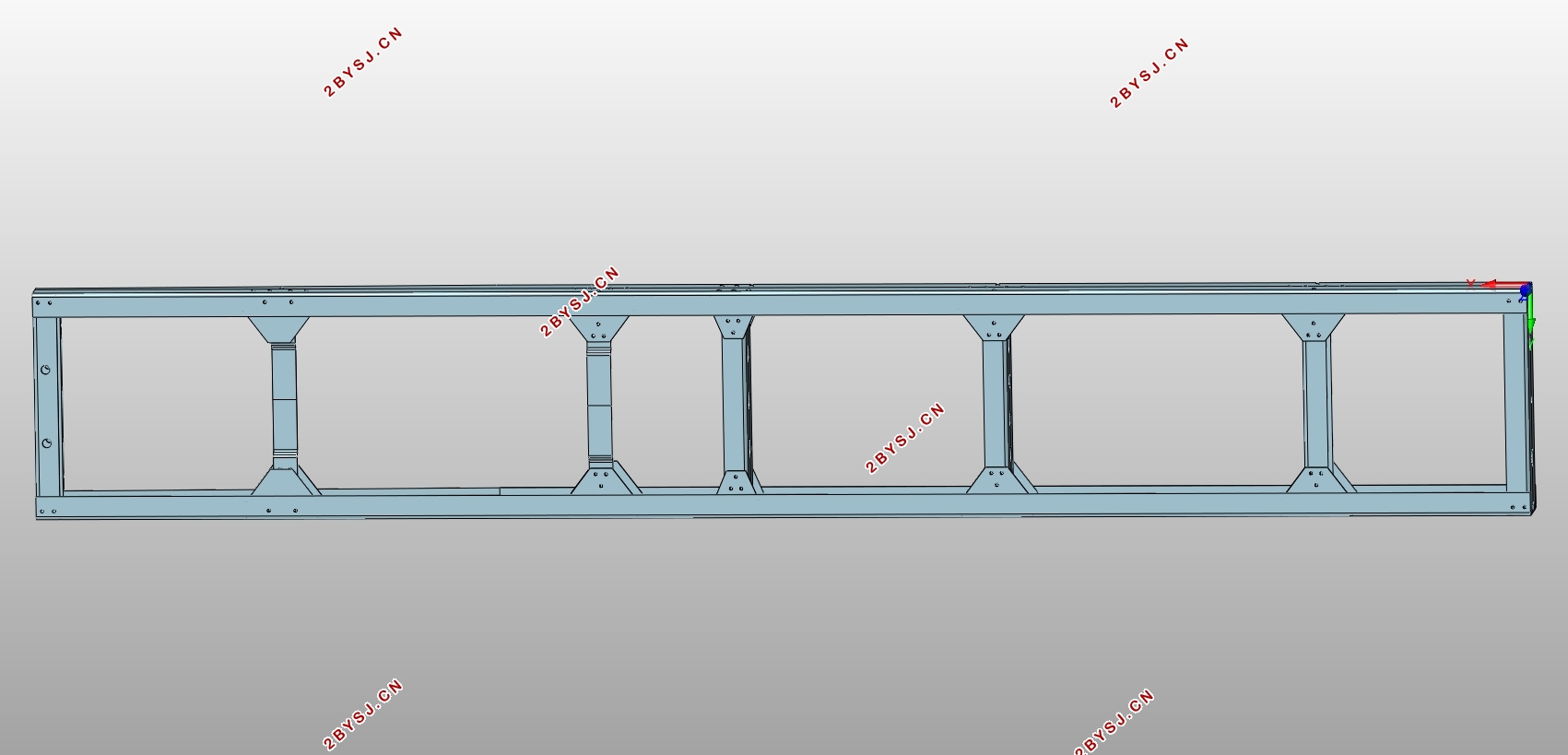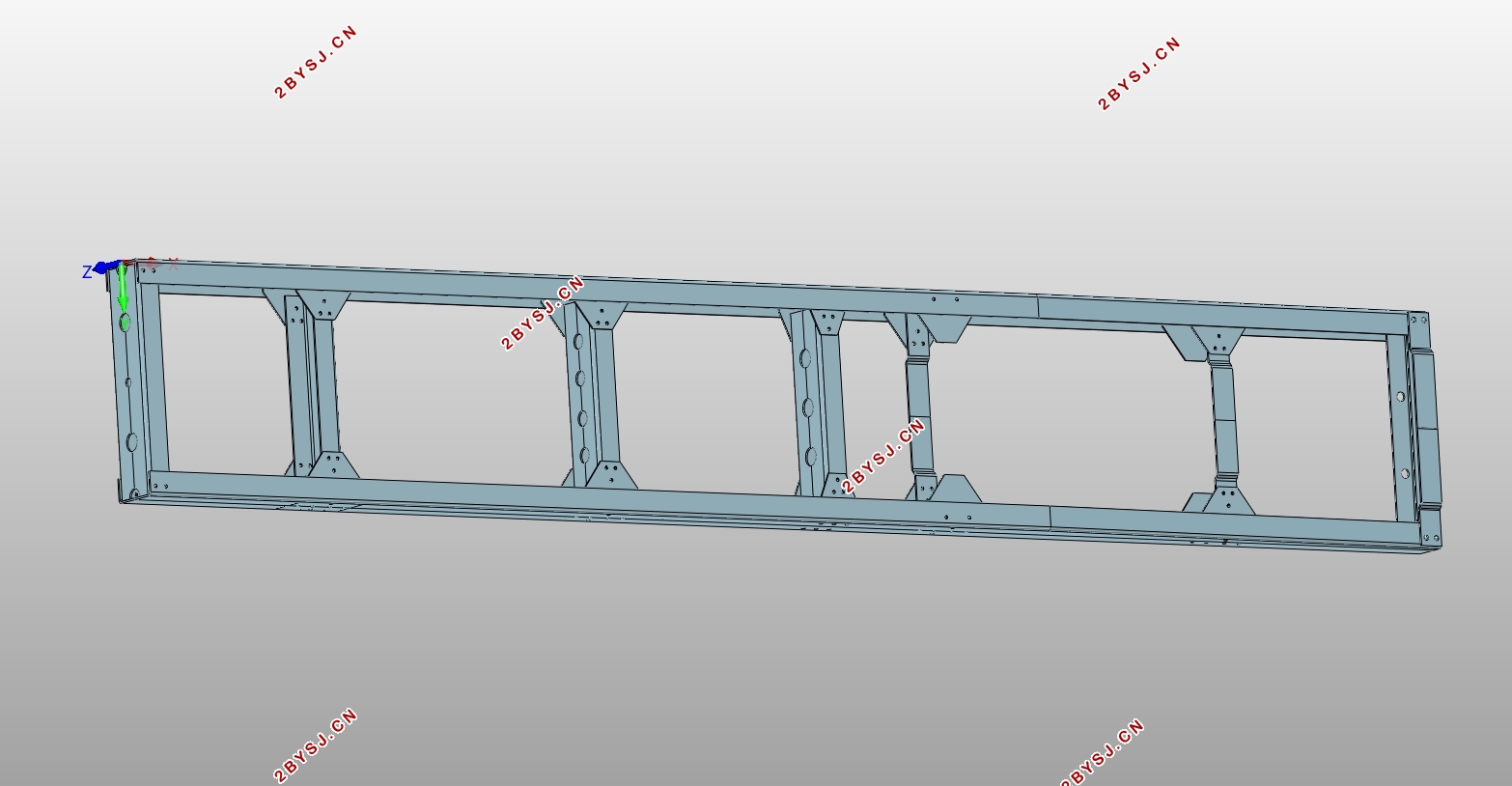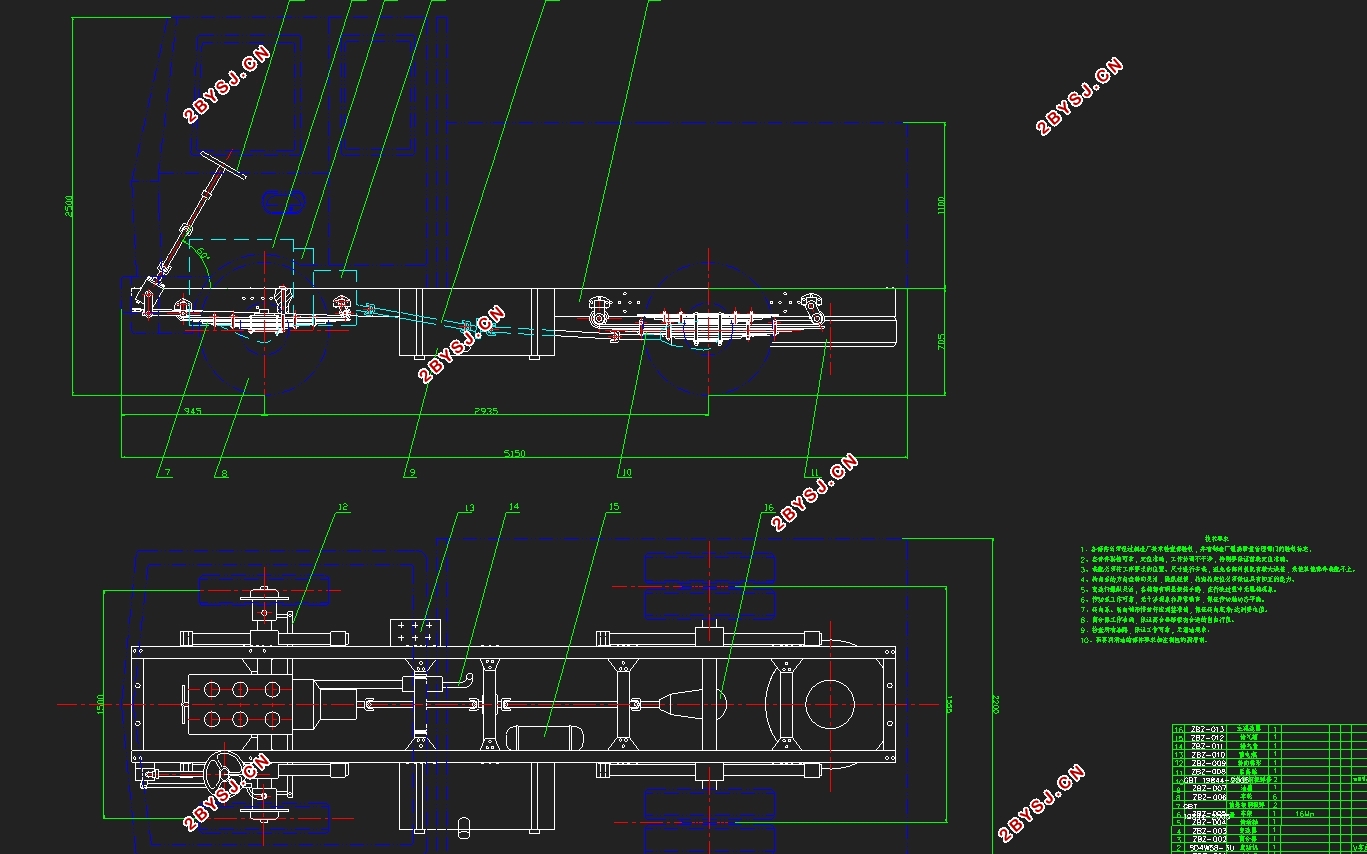轻卡载货汽车车架设计(含CAD零件装配图,STP三维图)
无需注册登录,支付后按照提示操作即可获取该资料.
轻卡载货汽车车架设计(含CAD零件装配图,STP三维图)(任务书,开题报告,文献摘要,论文说明书27000字,CAD图3张,STP三维图)
摘 要
车架是车辆上负责承载的部件,其在结构上的性能将直接影响到车辆设计的成败。本文采用有限元法对车架的结构进行分析,考虑车架的结构优化,这对提高车辆的性能,降低设计成本、整车制造成本以及提高市场竞争力都有重要意义。
通过对Catia和Ansys软件的使用,建立具有实体单元的轻卡载货汽车的有限元模型。Ansys软件以其庞大的分析功能和高可靠性,在静态分析、动态分析和优化设计等方面都具有非常强大的优势。在此基础上,对轻卡载货汽车的静态与动态性能进行研究,建立基于实体单元的拓扑优化模型。本文通过分析车架优化设计的原理和方法,通过对某轻卡载货汽车车架进行有限元分析和优化,得到对车架结构有益的结论。
最后,本文介绍了车架优化的基本概念、方法和原理,并且在各类弯曲、制动、扭转的极端工况下,建立了实体单元的优化模型,并对优化的结果进行分析,提出优化建议。
关键词:轻型载货汽车车架;Ansys;模态分析;拓扑优化
Abstract
The frame is an important part of automobile assembly.The performance of frame structure directly affects the success or failure of automobile design.The finite element method is used to analyze the structure of automobile frame, and the optimization of automobile frame structure is taken into account.
By studying Catia and Ansys software, the finite element model of light truck with solid element is established.With its powerful analysis function and high reliability, Ansys software has incomparable advantages in static analysis, dynamic analysis and optimization design.On this basis, the static and dynamic performance of truck frame structure is studied.The topology optimization model based on entity unit are established.The principle and method of optimal design are analyzed.Through the finite element analysis and optimization of the frame structure of a light truck, a beneficial conclusion is drawn for the frame structure design.
Finally, this paper introduces the basic concept, method and principle of optimization.Under various conditions of bending, braking and torsion, the optimization model of solid element is established, the optimization results are analyzed, and the optimization suggestions are put forward.
KEY WORDS:light-truck's frame,Ansys,modal analysis, topology optimization
车型参数表
车型 欧铃ZB5040XXYBSC3S厢式运输车 发动机型号 SD4W58-3U
外形尺寸 5150x1695x2660mm 货箱栏板内尺寸 2390x1585x1700mm
总质量 3770Kg 整备质量 1780Kg
轴距 2700mm 额定载质量 1665Kg
轴荷 1260/2510N 前悬/后悬 1010/1440mm
最高车速 90km/h 前轮距 1240mm
后轮距 1360mm 底盘尺寸 4810x1605x1990







目录
第1章 绪论 1
1.1 课题的背景 1
1.2 论文选题的目的及意义 1
1.2.1 基本内容 1
1.2.2 选题的目标 2
1.2.3 选题的意义 2
1.2.4 国内外车架设计的研究概况 2
1.2.5 国内外车架有限元分析概况 3
第2章 有限元原理与软件介绍 5
2.1 有限元分析的原理与方法 5
2.1.1 构造的离散化和位移函数 5
2.1.2 单元特性分析 6
2.1.3 单元组设置 7
2.2 Catia软件介绍 7
2.2.1 Catia发展历史 7
2.2.2 Catia功能介绍 8
2.3 Ansys软件介绍 10
2.3.1 Ansys发展概述 10
2.3.2 Ansys主要功能介绍 10
2.3.3 Ansys提供的分析类型 12
2.3.4 Workbench软件介绍 13
第3章 车架结构选型与建模 14
3.1 车架选型 14
3.1.1 选择现有车型及相关参数 14
3.1.2 车架基本结构形式的选取 14
3.1.3 车架宽度的选取 16
3.1.4 车架长度的选取 16
3.1.5 车架工艺及材料的选取 16
3.1.6 车架断面形状的选取 17
3.1.7 车架连接方式的选取 18
3.1.8 横梁连接板设计 19
3.1.9车架三维装配图 19
3.2 车架受载情况模拟 20
3.2.1 静载荷分析 20
3.2.2 动载荷分析 21
3.2.3 车架前后轴载荷分配 21
第4章 车架静力学分析 23
4.1 车架静力学分析意义 23
4.2 车架有限元模型简化 23
4.3 网格划分 24
4.3.1 网格类型选取 24
4.3.2 网格尺寸选择 25
4.3.3 网格质量检查 25
4.4 静力学分析 27
4.4.1 构建悬架模型 27
4.4.2 弯曲工况下车架的有限元分析 27
4.2.3 制动工况下车架的有限元分析 30
4.4.4 弯扭工况一下车架的有限元分析 31
4.4.5 弯扭工况二下车架的有限元分析 34
4.5 车架的拓扑优化 37
4.6 车架设计改进建议 38
第5章 车架模态分析 39
5.1 模态分析介绍 39
5.2 车架模态分析意义 39
5.3 模态分析过程 40
5.4 结果分析 43
第6章 总结 45
参考文献 46
致 谢 48
